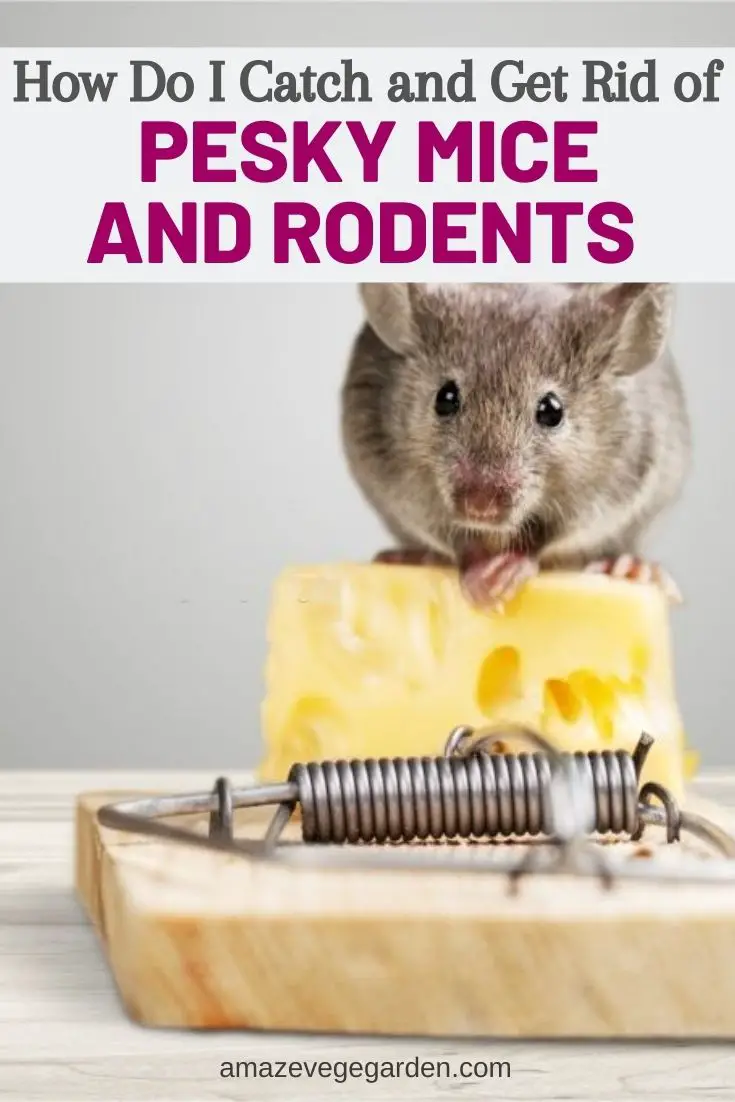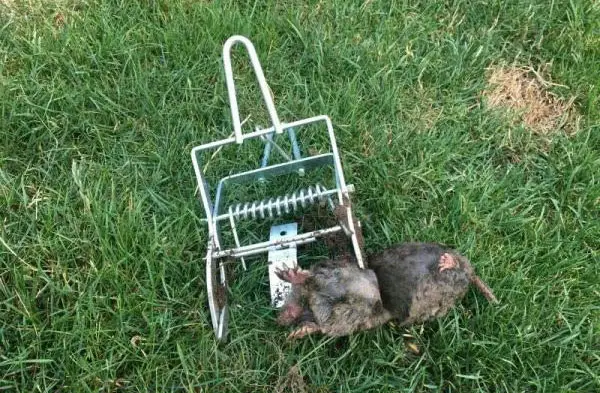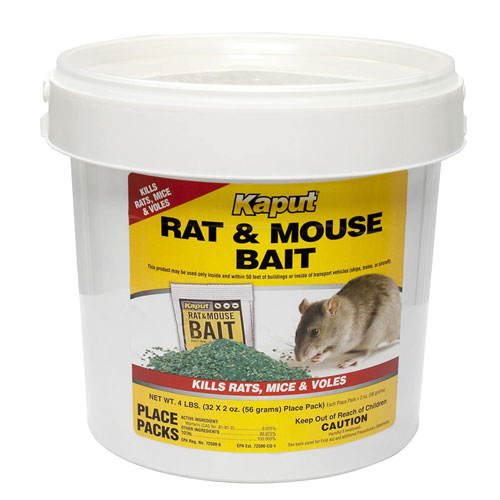I always feel the hairs at the back of my neck and on my arms stand once I hear the tiny yet shrill squeaks of pesky mice. I know that some people keep mice as pets, and others even breed them for this purpose. But even if these creatures are popular pocket pets, I seriously despise mice in my house.
They may be small and appear cute and cuddly, but underneath that fuzzy exterior are minute machines made for destruction. Mice can wreak havoc in gardens and farms because they chew through almost anything, and they destroy crops and flowers, which can cause huge damage and losses to gardeners.
Since mice can be pretty damaging, do not ignore a pest problem once you suspect or notice it. There are many ways to get rid of mice. But what you have to remember is that there really are no humane ways to control mice using lethal means, only less brutal methods. Furthermore, an extensive mice infestation might require professional help. So, don’t hesitate to get in touch with a reliable pest control company if you have to.
There are many traps available on the market today that will help solve your mouse/rat dilemma – but don’t just buy one blindly! Do some research on which type works best for your situation and make sure it meets all safety standards before using it. With a little bit of knowledge and effort, you’ll soon have those problematic rodents under control – allowing you to reclaim your peace of mind!
Identifying The Problem
It’s important to identify the problem of pesky mice and rodents before you tackle it. If you’re noticing scurrying shadows in your home or nibbled food, chances are you’ve got an infestation on your hands. To figure out how bad the situation is, take a look around for droppings and other signs of rodent activity. This will give you a better idea of where they’re coming from and what type of mouse or rodent you may be dealing with.
Once you have identified the issue, it can help to understand their behavior so that you can properly remove them from your living space. Understanding why these critters enter our homes in the first place can provide insight into effective removal strategies. So let’s move on to understanding mouse and rodent behavior!
Understanding Mouse And Rodent Behavior
It’s estimated that mice and rats cause more than $19 billion in damages a year. That statistic alone should encourage us to understand these pesky critters better so we can prevent them from wreaking havoc on our homes. To catch and get rid of rodents, it helps to first examine their behavior and why they’re where they are.
Mice and other small rodents tend to be shy by nature, but when food is scarce or temperatures drop, they become bolder and move into areas with plenty of warmth and sustenance – like your home! They love the dark places inside walls, behind stoves and refrigerators, under cabinets, and anywhere else there’s shelter. Mice also have an uncanny ability to squeeze through very tiny spaces. So even if you think all possible entry points are sealed off tight, chances are something has been left open for these critters to exploit.
Other signs of mouse activity include droppings (look for black pellets about the size of rice), gnaw marks on baseboards or furniture legs, rub marks along walls (where oils from fur transfer onto surfaces), and footprints near wall edges or dusty spots on floors. If you see any of these signs then it’s time to take action before things get out of hand. It’s important to note that this doesn’t just apply to humans; pets play an integral role here too as cats will often hunt down rodents successfully while dogs may scare them away temporarily. With some patience and determination, you can tackle rodent problems yourself without resorting to expensive exterminators or costly traps.
Prevention Tactics
The best way to prevent mice and rodents from entering your home is to make sure the environment around your house is not inviting. Start by sealing any entry points, such as small holes in walls or cracks in windowsills. Make sure that all food items are stored securely away, with no access to these critters. Additionally, remove any debris piles near the foundations of buildings, as this can provide shelter for them.
You may also consider using repellents outside the perimeter of your property to ward off potential intruders. Repellents come in natural varieties, like peppermint oil and cayenne pepper powder, which act as a deterrent when spread around areas where they could enter. You could also try ultrasonic sound emitters that create audio frequencies that humans cannot hear but will force pests away from their hiding spots.
If you already have a rodent problem inside your home then it’s important to take action quickly and decisively. Clean up messes right away so there’s less chance of attracting new ones and set traps wherever necessary. Taking preventive measures now can help ensure future infestations don’t become an issue.
1. Traps
Many kinds of traps are available, such as the following: glue traps, snap traps, electronic traps, and live traps. Using live traps is the most humane method because this will allow you to keep mice alive so that you can release them in the wild or in a forested area that’s far from your home.
Snap traps, which use a metal bar that snaps shut on the rodent when it enters the cage or box, are by far the most popular type of trap. This technique can be used for either capturing living animals or disposing of their remains. Be mindful that even though this is one of the more effective ways to get rid of them, it may be too risky for those who have young children or pets living with them.
A glue board trap, in which the mouse is caught by its feet on an adhesive surface, is another possibility. Placing these traps near food sources, like pantries or entryways to dwellings, increases their effectiveness. Although these traps can be used more than once, their limited area coverage and finicky setup make them less effective than other methods.
Now that we have so many options, let’s get to work getting rid of those pesky insects and rodents! It’s important to know where everything goes, so before you try to set anything up on your own, do some research on the best practices.
Putting Out Traps
Putting out traps is an effective method for capturing mice and other rodents. Depending on the scope of the problem, you can choose from a number of different traps. The most popular variety is the snap trap, which is activated by the animal’s entry and features a bar that snaps shut when released. Electronic traps, which use bait to attract animals and then shock them to disable them, are also widely used. The animal can be easily disposed of once it is trapped inside.
Place traps in areas where rodent activity has been observed or where their droppings have been discovered. Since animals tend to re-visit locations where there is readily available food, this will improve fishing success. Never leave a trap unchecked for too long, as you could end up leaving behind a live animal. Remember to reset any reusable traps, such as electronic ones, after each successful capture.
Humane alternatives, such as live capture cages or glue boards, should be carefully considered before resorting to more extreme measures. If you use these techniques, you can release captive animals back into the wild without putting them through any unnecessary stress. If you take the time to plan and prepare, setting traps can help you get rid of mice and other rodents for good.
2. Raise Some Cats
Since I raised two cats in my backyard, the number of mice that appear in my garden has been significantly reduced. Even those squirrels that usually come to visit my garden have to take a detour. This is because every time my cats spotted a mouse, they will pounce on the mouse right away.
We all know that cats are the “natural enemies” of mice, and cats can really take good control of mice. Otherwise, even if you spend a lot of effort catching mice, you can only get half the result, and the effect is very limited.
How can we ensure that the cat will do his job when he saw a mouse?
We need to put our cats “on duty” in the garden 24/7. We need to make sure that the cats do not enter our house for food. We may have them stay outside with shelter.
We only feed them one meal every morning, and that’s it. We never let the cat eat all day long Because the cat will become lazy and sleepy if they are too full. When the cat is half hungry, it is the most energetic way to catch the mouse.
Some of my friends told me they did raise a few cats, but they are just lazy cats and sleep all day. Then only they found out that they feed their cats three meals a day. Since the cats never feel hungry, they won’t get the motivation to catch the mouse at all. So, feeding them one meal a day is very important.
3. Poison
Poisonous substances used to kill mice, rats, and other rodents, like voles, are known as rodenticides. These are often used as bait. When using poison, keep in mind these two issues:
- there are many risks when using dangerous elements, and
- poisoning animals is inhumane.
Because of these concerns, the US EPA has provided new guidelines as regards rodenticide use. This involves using ingredients that are less risky to the health of people, pets, and also wildlife. The EPA has also come up with 4 tiers of bait stations, which classify rodenticides according to how resistant these are to kids and pets. This classification also considers how tamper- and weather-resistant certain rodenticides are.
Nevertheless, many people feel quite uncomfortable using poisonous bait because of its potential for negative environmental impacts. Furthermore, poisonous baits not only can kill pests, but they can also kill non-target species such as birds and other small animals. These products contain chemicals that have been linked to water contamination and other ecological issues.
Fortunately, there are several humane methods of pest control available today that don’t pose any risks to people or wildlife. These include live trapping techniques along with exclusionary methods like sealing up entry points into homes or buildings. With proper planning and implementation using these tools, you can effectively rid yourself of pesky mice and rodents without endangering anyone in the process.
4. Coyote Urine
A friend has told me about a smart trick he used to prevent mice from intruding on his garden. The secret weapon is coyote urine. He told me it is very effective to get rid of mice, and also I can get it at a local specialty store or Amazon.
When I go to get coyote urine at a local specialty store, I found there is really such a thing sold in the store. I hurriedly bought it home and sprinkled it along my vegetable field and flower garden.
The instructions say I need to sprinkle it twice a week in the first week. After I sprinkled for the second time, I found that all the crops in my garden are in good shape and there are no more mice biting on the crop. I think the coyote urine works its magic.
5. Make use of Natural Repellents
You can also use natural repellents to keep rodents out of your home without the need for other harmful chemicals. I’ve here compiled a list of four all-natural methods that have been shown to be effective in keeping rodents away:
- You can try to grow peppermint plants all around your property. The smell of peppermint can deter many pests, including rodents like mice and rats.
- Put ultrasonic devices in the key areas around your house. The high-frequency sound waves they emit are uncomfortable for many pests (mice and rats included) and will cause them to flee the area quickly.
- Despite its popularity with felines, cats, and other small animals, catnip is an effective rodent repellent. To keep unwanted pests out of your house without resorting to poison, try this.
- You can also use cayenne pepper to deter rodents from entering your home by sprinkling the area around windowsills and doors.
These natural approaches are preferable to short-term pesticide use, but there is still one more factor to consider prior to implementing any kind of rodent prevention: the possibility of poisonous bait. Caution is warranted when considering the use of poison baits to exterminate rodents, as their misuse could have dire consequences, including the death of pets or wildlife in the area.
6. Humane Methods Of Control
Humane methods of control are an excellent way to catch and get rid of pesky mice and rodents. These approaches will not harm the animals but instead, encourage them to move away from your home or business.
You can start by blocking all potential points of entry for mice and other rodents into your property. Seal up cracks in walls and foundations with caulk or steel wool, install door sweeps on exterior doors, repair screens in windows, fill holes around pipes that enter buildings, etc.
Remove food sources like pet food dishes or bird feeders located outside the building since these can attract hungry critters searching for a meal! Finally, use humane traps such as live-capture cages or box traps rather than glue boards which can cause distress to rodents caught in them.
By using these tactics you may find yourself well on the way to having fewer uninvited guests in no time at all!
7. Professional Exterminators
When it comes to getting rid of pesky mice and rodents, a professional exterminator can be an effective way to go. Exterminators are highly trained experts who know the most efficient ways to get rid of these pests quickly and effectively. They use specialized methods that ensure the mice and other critters will not return in the future.
The first step is for the exterminator to inspect your home or business thoroughly so they can identify any potential entry points. Once identified, they’ll develop a plan specifically tailored to your needs. This could include sealing up cracks and crevices where rodents might enter, as well as setting traps inside buildings or outdoors around perimeter walls. Afterward, they may also apply poison baits or dust if necessary.
The assurance that you won’t have to worry about another infestation any time soon is worth the cost of hiring an exterminating service, and most of them offer guarantees on their work. However, keep in mind that even after hiring a professional exterminator, you still need to practice good sanitation and cleanliness to ensure that rodents don’t find their way back into your home.
8. Sanitation And Cleanliness
The old saying goes, “Cleanliness is next to godliness” – and that’s especially true when it comes to getting rid of pesky mice and rodents. Keeping your home clean and tidy not only makes for a more pleasant living environment but can also help you prevent an infestation in the first place.
Start by making sure all food scraps are disposed of properly; leaving food out can attract vermin looking for easy meals. Vacuum often, as well as sweep behind furniture regularly; this will remove any crumbs or debris they might otherwise feast on. Additionally, don’t store anything edible near windowsills or other areas where pests could enter from outside.
Finally, check around the house for any cracks or holes that rodents may be using as entry points into your home. Plugging these up with steel wool will ensure no unwelcome visitors get inside again.
9. Closing Entry Points
Now that sanitation and cleanliness have been established, it’s time to move on to closing entry points. Rodents are sneaky creatures who enter through small cracks or holes in walls and baseboards, so it’s important to identify and seal all possible entry points. Here is a 4-step guide for locating and blocking off these pesky critters:
- Inspect the outside of your home or business for any visible access points.
- Check behind large appliances such as refrigerators and ovens.
- Look around windows, doors, attics, crawl spaces, vents, plumbing lines, and utility lines for potential entries.
- If you find an opening larger than 1/4 inch use steel wool mixed with caulk to close them off permanently from the outside – this will prevent rodents from squeezing their way back in!
Once you’ve identified and sealed up all existing areas of entry point exposure, set traps inside those same locations for mice and other rodents that may already be living in your home or office space. This proactive approach can help catch stragglers before they cause further damage or spread disease throughout your property. With some patience and perseverance, you’ll soon be able to successfully block out unwanted guests while reclaiming control over your environment.
10. Decontamination After Removal
Once you’ve gotten rid of the pesky mice and rodents, it’s important to decontaminate your home or business. Mice and rats are known carriers of various diseases that can be spread throughout your space and cause serious health risks. To prevent any further infestations and illnesses, you’ll need to take the necessary steps for proper decontamination.
You need to thoroughly vacuum every area where the rodents were present. This will help remove most of their droppings, fur, and other debris left behind in their wake. You should also use a disinfectant spray on hard surfaces such as countertops or floors. Make sure all areas are dry before moving on to the next step.
Inspect each area with a flashlight to make sure no rodent remains have been missed during cleaning. If there are signs of leftover food particles or waste, these too should be removed using a damp cloth or paper towel to avoid attracting more pests into your home. With this complete, you can move forward knowing that your environment has been properly sanitized from any potential contamination caused by mice or rats.
11. Monitoring Progress
Monitoring progress is like peeling an onion – layer by layer, you can get to the root of the problem. While it’s important to take action immediately, tracking changes over time provides invaluable insight into what methods are working and which ones need improvement. To ensure that pests stay away for good, a vigilant monitoring program needs to be implemented alongside other control measures.
Setting up traps and bait stations around your home or office. These should be placed strategically based on where mice and rodents have been seen before, as well as any potential entry points they could use to gain access inside. Once these items are in place, it is critical to check them on a regular basis to ensure they are still functional and have not been tampered with by animals or humans alike. Keep track of how many dead mice or rodents you find in each trap if possible so you can gauge the success of your efforts.
It is critical to inspect your property on a regular basis for signs of new pest activity, such as droppings or gnaw marks on wood surfaces. This will aid in the early detection of any problems, allowing for prompt and appropriate corrective action. Long-term prevention strategies can then be tailored to maximize effectiveness using data from regular monitoring activities.
12. Long-Term Prevention
The ultimate goal of any pest control is to keep the little critters away for good! To do this, we need to understand what’s attracting them in the first place. Long-term prevention involves taking steps to make your home less attractive and accessible for rodents:
- Store food properly – seal it in airtight containers or store it in the refrigerator.
- Keep counters and floors free from crumbs and spills.
- Patch up holes around windows, doors, pipes, etc., with steel wool or caulk.
- Use a dehumidifier to reduce humidity levels in basement areas.
You’ll also want to take preventive measures outside of your home as well. Clean up debris piles that could attract mice and trim back overgrown vegetation near foundations. Mice can squeeze through incredibly small spaces so you may have to be extra careful when sealing holes. If these efforts don’t seem effective enough on their own, consider using traps or repellents such as ultrasonic sound devices. These types of solutions should only be used after consulting with an experienced professional.
13. Other Ways to Control or Get Rid of Mice
Prevention is crucial if you do not want rodent problems in the future. Here are a few ways to avoid a mouse infestation.
- What you can do is keep areas clean and free from food odors, spills, or scraps, which are very appealing to mice.
- Seal entryways and caulk holes, and other small openings. Please don’t make it easy for mice to gain entry into your garden.
- Keep garden bins far from your garden so that mice won’t find your garden right away.
- Practice IPM or Integrated Pest Management methods. This involves prevention, immediate identification of pest problems, and treatment.
- Get in touch with a dependable pest control company if an infestation is severe.
Bottom Line
The battle against mice and rodents can be a long and hard one, but with the right tactics, it’s possible to rid your home of these pesky critters. To do this successfully, it is important to identify the problem, understand mouse and rodent behavior, and use prevention methods such as sealing off entry points and setting traps. Once you have successfully caught them, safely dispose of dead rodents and decontaminate them after removal. Finally, monitor progress and continue using preventative measures for long-term success.
Ultimately, getting rid of unwanted mice or rodents requires patience and perseverance. But when we’re successful in our efforts at last – what a relief! There’s nothing quite like achieving victory over those pesky intruders who’ve been causing havoc in our homes. So if you find yourself battling an infestation of mice or rodents anytime soon don’t give up hope; just remember that there are solutions available to help get things back under control again.
By following the advice provided above, you will be well on your way to permanently removing any unwanted visitors from your home. After all, no one likes uninvited guests, so let’s work together to ensure they never stay longer than necessary!





